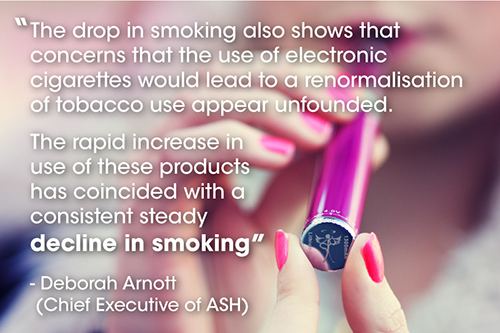So I did some more google searches and found the video by Phil Busardo, where he discusses the new chip with the CEO of the Evolv, Brandon Ward:
It's great to see Evolv putting user safety first on their priority list, and I'm pretty sure they've done a great job with the DNA40. The reason I'm sure of this is the reason Brandon gives us for putting safety first:
"I was a smoker for 20 years and I don’t want to put myself in danger"Brandon Ward and Evolv is not doing this just to make money. I'm not saying that they don't want to make as much money as possible, but they are also vapers themselves and genuinely wants to make vaping as safe as possible. The reason these guys got into vaping in the first place was to get rid of the risks of smoking, and what Evolv has realized, and in my opinion this is why they are one of the innovation drivers of the industry: Evolv understands that practically all vapers got into vaping to reduce risks as much as possible. So user safety is important to all vapers, and this means that if they put user safety first, not only will they protect their customers and themselves from harm, but it will also give them a competitive advantage. It's pretty hopeless for a company based in the US or Europe to compete with China on price, we all know that, so this means they have to compete on other attributes, for example quality, design and of course safety.
If you've watched the whole video you'll notice there is a lot of talk about user safety and how their main focus is to avoid any harm to the user, even if the user does something wrong, like putting in a battery that can't handle enough output without blowing up. Another question they bring up that I find quite interesting is this one: With this new technology, will wicking materials and e-juices now start to have temperature limits printed on the packaging? Now, Phil points out that the juice-companies might not be to happy with this, because that would mean they'd have to start testing their juices. But Brandon says "no-no", they've already talked to some juice companies about it at they are just excited about the new technology. There are several reasons for that. For one thing it is pretty easy to do this testing, and for the e-liquid-companies to put a maximum temperature limit or a recommendation on the bottle would give them the opportunity to protect the customer from harm. Because obviously user safety is also a priority for the e-juice companies. Why? Well, they are usually also vapers and former smokers that got into vaping to avoid harm. They are already testing their juices for harmful substances like diacetyl. And with the focus on vaping safety that's in the media they would be put out of business pretty quickly if their juices turns out to harm the users.
A lot of you have probably heard about Dr. Farsalinos' new study on "Temperature of evaporation, liquid consumption and vapor analysis in realistic conditions". The results of this study I think will be very interesting and very important. As you probably noticed in the video, Brandon is talking quite a lot about how temperature affects wicking-materials, liquid and metals, and the fact that temperature controls flavour, while wattage affects the amount of vapor produced. So I think it's pretty safe to assume that Evolv has done some testing themselves and have some idea what will come out of this study.
Think about it, a lot of people, if not most of them, that are now working in the vaping industry took a chance and quit their old jobs to start working with something they believe will help others quit smoking like they did. It is in all these peoples interest to make vaping as safe as possible. I guess some of you are seeing where I'm going with this, right? What I'm saying, and what I think the DNA40 is a perfect example of, is that user safety is one of the things that companies in the vaping industry is going to have to focus on to stay alive (literally and figuratively). The companies that don't, won't last long. The very nature of vaping, the whole idea behind it, harm reduction, will make safety a top priority for all serious companies that plan to stay alive for a while, because their customers main priority is to minimize harm.
The focus and studies on safety, and the innovation that is done to ensure vaping is as safe as possible is happening without any regulation from authorities. It is in the interest of the industry and the vaping communities to ensure vaping is safe and the majority of them are working in that direction today and will continue to do so, if the regulators will let them. The regulations proposed by WHO and their pharma-friends will work in favor of the only companies that didn't get into the vaping industry to reduce harm, the Big Tobacco companies. These companies do not have the same reasons for being in the industry, and they do not have the same incentives to work for user safety as the independent e-cigarette companies. So if the authorities really want to help smokers, reduce harm and save lives they need to get out of the independent vaping industry's way and go stand in the way of Big Tobacco instead.
























